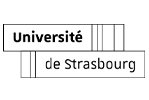Environmental DNA: a plant diversity and environmental indicator for freshwater ecosystems
Within a decade, environmental DNA (eDNA) has become an accepted tool in many countries for studying biodiversity, from detecting target species to describing entire communities (Taberlet et al. 2018). This expanding research takes advantage of the democratization of high-throughput sequencing to massively sequence residual DNA fragments extracted from different matrices (e.g., water, soil, faeces, sediments, archaeological remains). Recent proofs of concept describe this molecular approach as complementary, equivalent, or even more efficient than traditional field surveys for describing fish, amphibian (Valentini et al. 2016), and invertebrate (Elbrecht et al. 2016; Meyer et al. 2020) communities. Conversely, applications using eDNA remain rare for plant communities in aquatic environments, with less than 30 papers to date. Our work aims to develop a methodology for the detection and recognition of plant species based on residual DNA fragments found in aquatic environments. We have initiated a first application of this method as a biomonitoring tool in the monitoring of stream restoration in the Northern Vosges Regional Natural Park. This ‘classical’ eDNA metabarcoding approach is accompanied by the development of a DNA barcode database of more than 500 wetland plant species for the Grand-Est Region, including threatened, invasive, and unknown species (bryophytes, Characeae). In parallel, water samples from the old Rhine River and the Rhine canal were taken to test the limits of the method on larger hydrosystems compared to headstreams. River dynamics and water physicochemical properties influence eDNA concentration and quality hence its ability to provide a comprehensive signal of the species present. This project is also structured around the dismantling of the nuclear power plant in Fessenheim aiming to test the responsiveness of the method to a quickly changing system. All in all, comparison of the eDNA signal from different hydrosystems informs on the utility of this method as a monitoring tool for aquatic vegetation.




